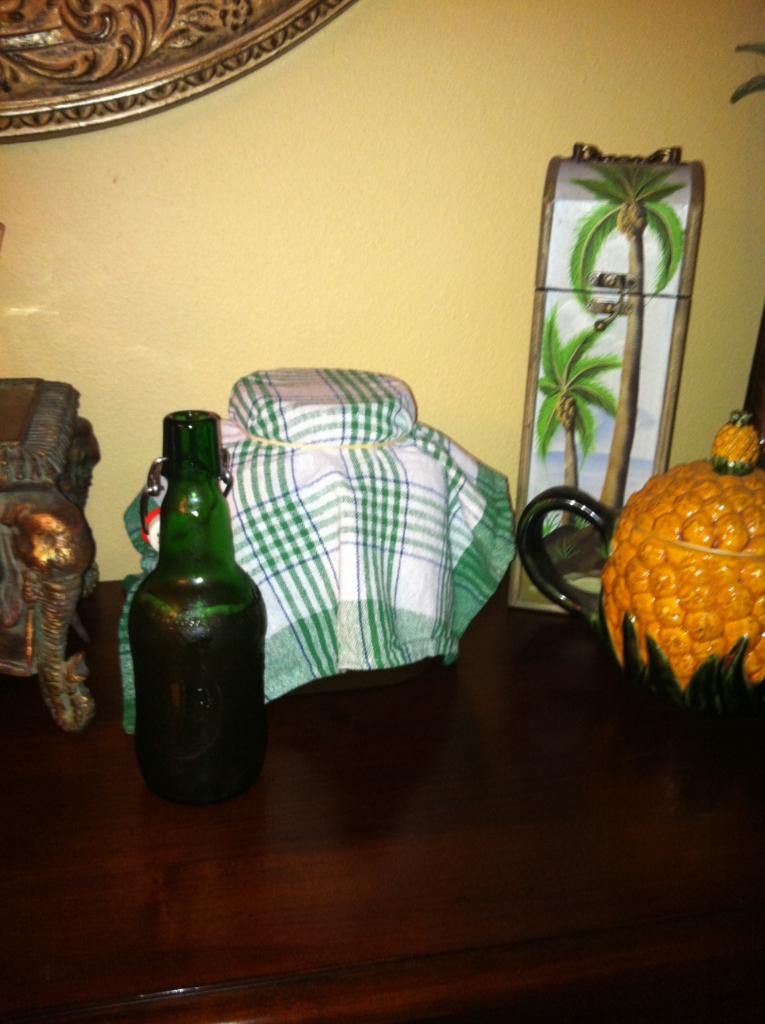I don’t really know what Kombucha has to do with my yard, but one of the things I enjoy most is that you can flavor the drinks with different fruits, herbs, and spices, some of which I am sure will come from my yard. I love making stuff like this, and try to get creative in the flavoring.
So what exactly is Kombucha?? Kombucha is a fermented tea that is often drunk for medicinal purposes. There is limited scientific information supporting any health benefit. Kombucha is a living health drink made by fermenting tea and sugar with the Kombucha culture. The culture is called a SCOBY (Symbiotic Culture of Bacteria and Yeast). The results can taste like something between sparkling apple cider and champagne, depending on the tea. Actually I was talking to a friend about the flavor today and I described it as kind of a dirty sock kind of smell, which really isn’t that appealing a description. I guess it is kind of an acquired taste, but I love it!
The first recorded use of Kombucha comes from China in 221 BC during the Tsin Dynasty. It was known as “The Tea of Immortality”. Kombucha tea has been reported to be a cure-all for a wide range of conditions including baldness, insomnia, intestinal disorders, arthritis, chronic fatigue syndrome, multiple sclerosis, AIDS, and cancer. Supporters say that Kombucha tea can boost the immune system and reverse the aging process. Between the Kombucha and the bee stings I should live forever!! Kombucha tea is said to contain antioxidants, a compound that blocks the action of free radicals (activated oxygen molecules that can damage cells).
I have been thoroughly enjoying making Kombucha tea. I bought some old Grolsch bottles on Ebay to bottle my tea in. They are perfect because of the hinged closure, great for the fermentation process. Just like in brewing or wine making there is a secondary fermentation when you add the different fruits etc. After I bottle the Kombucha, I flavor it with things like Gogi berries, raspberries, ginger, chai spice, etc. I leave very little space at the top of the bottle, and the sugars that are in the fruits allow for a secondary fermentation to occur. I let the bottles sit on my counter for 3-4 days, and then I put them in the refrigerator to slow the fermentation process. You need to be careful when you open the Grolsch bottles, remembering in the fermentation process CO2 is released as the yeast feeds from the sugars. The Kombucha can become quite effervescent.
I am really grateful that my daughter taught me about Kombucha. Not only do I enjoy the thought of the possible health benefits, but I love the fermentation process. The good news also is that it has very few calories because most of the sugars are fermented out.
So I hope I turned you on to making some “Buch”!
 |  |


No comments:
Post a Comment